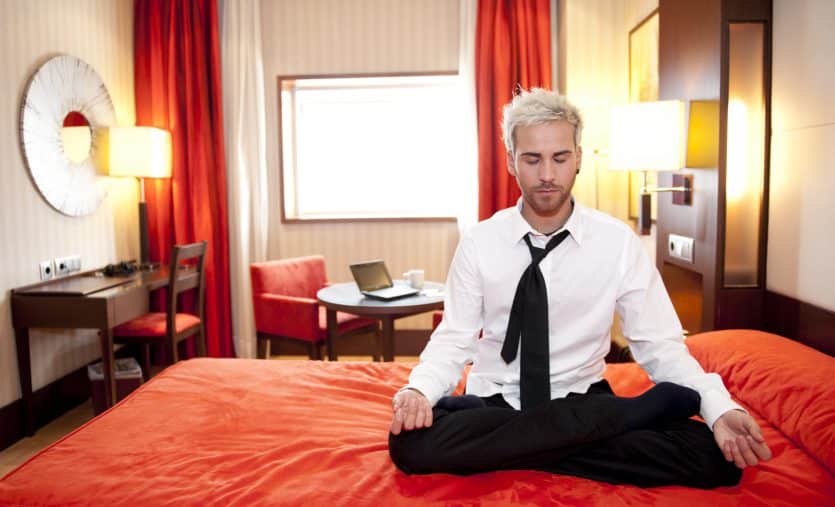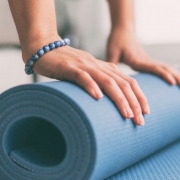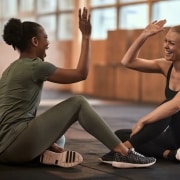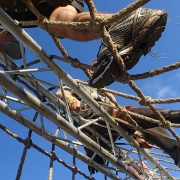Travel Fit: Tips for Fitness on the Go
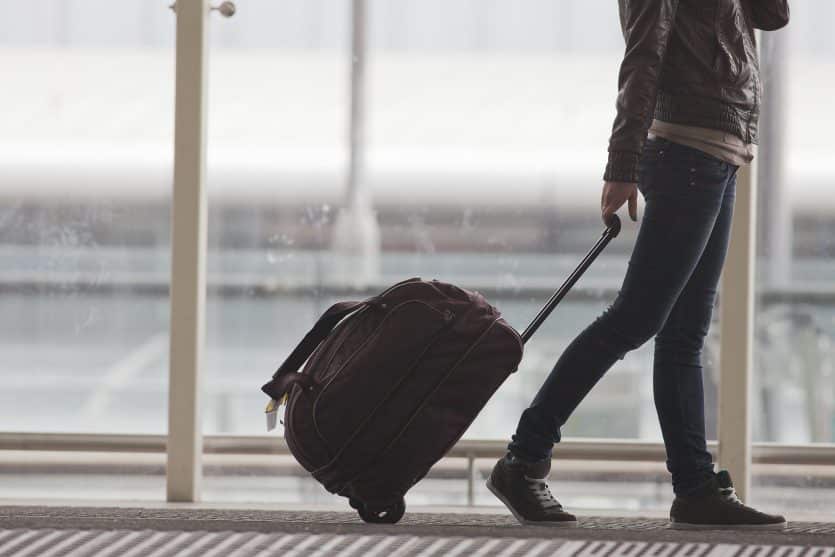
You’re deep asleep when your alarm clock rings at an early hour. It’s still dark, but it’s time to get up. You triple-check that your bags are fully packed—are you missing anything?—and book it out the door to the airport. Whether you’re flying for work or play, the stress of an early morning flight is a constant.
Seasoned travelers are ready for most things—for the noise, the turbulence, the germs in the recycled airplane air. But one thing travelers don’t often prepare for is maintaining your fitness on the go. The list of reasons—ahem, excuses—can run long.
The good news is that traveling doesn’t have to differ from home so much. It’s possible to take your healthy habits on the road with you. With a little bit of planning and forethought, you can take your fitness goals on the road with you. This will keep your routine intact, and also help you maintain energy, so you can feel your best during your trip.
Read on for tips on how to travel so you won’t unravel your wellness along the way.
Flying Fit
Research has shown that a sedentary lifestyle is associated with less favorable health outcomes for a variety of reasons. Not exercising or moving around burns fewer calories, promotes muscle loss, slows metabolism, encourages poor circulation, and more.
For these reasons, health professionals encourage breaking up sedentary periods with frequent activity. For example, if you work a desk job, incorporating frequent walking breaks into your day is a good way to keep your blood flowing.
The same is true for long flights. Sitting for long periods in a confined space makes circulation difficult. In some severe cases, blood clots or deep vein thrombosis (DVT) may become a concern. With DVT, a clot formed in the lower limbs could break free and block flow in a pulmonary artery—a very dangerous scenario.
Moving around on the plane helps with proper blood flow, general comfort, and you can sneak in some exercise. Try the following if you’re on longer flight. (Always heed movement restrictions given by the crew for safety reasons.)
- When you are seated, avoid crossing your legs. This further impedes circulation.
- Get up and walk the aisle frequently. Setting an hourly timer can help you accomplish this. The movement will improve circulation, which can help ease any cramping.
- Wear loose and comfortable attire. Unnecessarily tight or restrictive clothing will only further complicate circulation issues.
- Stay hydrated (see more on this in the section below)! Use the routine drink service to order beverages that will quench your thirst. Water is your best bet, over sugary or alcoholic beverages.
If you’re stuck in your seat, don’t despair. There’s plenty you can still do. It’s possible to stretch and be active even from your seat. Start from your feet and work up.
- Circle your ankles. You can do this by bending one leg at a 90-degree angle and propping it over the other. Start clockwise and rotate your ankle 10 times. Switch directions and repeat. Then switch feet and repeat the entire process.
- Stretch the piriformis. It’s a muscle found deep in your buttock—a muscle that quickly tightens with lack of activity. With one bent leg still resting on the opposite leg, lean slightly forward. This is commonly called the figure four stretch, and will engage the piriformis. Hold for 30 seconds and switch legs.
- Loosen your shoulders by adjusting your posture. Roll your shoulders back and down so they’re not hunched forward—a common position that promotes tightness and can contribute to tension headaches.
- Circle out your arms. This can be difficult in tight spaces, but you can easily modify it by bending your elbow so that your hand touches your shoulder. Once in this position, start by circling out one bent arm clockwise 10 times, then reverse direction. Switch to the other arm and repeat. If your seating area is crowded, you can do this while walking the aisle.
- Stretch your neck. Like the shoulders, the neck is an area that, when tight, often contributes to headaches. In tight spaces, this is likely to happen, especially if you’re leaning forward for much of the flight to read a book or focus on a screen. Carefully and slowly, lower your chin to your chest and hold for several seconds. Do the same in the opposite direction, looking up toward the ceiling. Then stretch the sides of your neck by slowly pulling one ear down to its closest shoulder. Switch sides to complete the circuit.
Get Creative with Your Workouts
Many hotels include gyms and other workout facilities. But it can seem difficult to carve out time to use them during travel. Fear not. There are still ways to incorporate more activity into your days on the road.
The simplest one is considering different options of getting around. Is your meeting close-by— within walking distance? Are stairs an option instead of an elevator or escalator? Can you park further from the entrance to a building? These are small changes, but they can stack up. If the options present themselves multiple times a day, over a week of travel, the number of extra steps can become substantial.
If you’re stuck in meetings all day or don’t have access to a hotel gym, you can incorporate desk- or chair-based exercises into your day to keep you moving. Here are some easy options that require no equipment or athletic clothing:
- Chair dips: With your palms on the seat of a chair, move the rest of your body away from the chair so your legs are bent at 90-degree angles. Dip your body below the seat of the chair so your arms must control the movement. Start with 3 sets of 5 and work up from there. Dips are great for your triceps and shoulders.
- Seated bicycle: Much like the supine abdominal exercise, the same movement can be done sitting on a chair. Place your hands behind your head and raise a bent knee (90-degree angle) to meet the opposite elbow. Do the same on the opposite side. Try for 3 sets of 10 at first. This exercise is great for engaging your oblique muscles.
- Seated Warrior 2: This is the same pose as the yoga position, but the seat of a chair supports the bent knee. Ensure your thigh is supported by the seat and your knee is at a 90-degree angle. Your back leg should be extended out behind you, with your foot perpendicular to your front foot. Extend your arms out to the side. You should feel a generous stretch across your chest and especially in the hip flexor of your back leg. This is key if you are sitting for a long time. Wake up the legs with 30-60 seconds of this stretch on each side.
Explore New Workouts
Even if your hotel does have a gym and you have time, it’s easy to let excuses get in the way. And it really can be hard to get motivated to use the space if it’s cramped, lacks windows, or doesn’t have the equipment you prefer. But that’s OK. There are still ways to get a great workout, outside of a lackluster facility.
A lot of people enjoy exploring new cities. It’s a great way to learn about new cuisine, visit historical sites, or take in new scenery. The same can be true for fitness classes. Hop on the internet and search for local studios that provide new routines or trusted favorites. This could be a yoga class, dance studio, boxing gym, or something different entirely.
Classpass.com, Yelp, and even Facebook can be great places to search for studios near you, wherever you are. Each site will give you information on price, type of workout to expect, and reviews from class-goers. Don’t limit yourself—treat exercise as another way to immerse yourself into the new city and culture you’re visiting. Expand your horizons and get your sweat on in the process.
Make Your Hotel Room Your Home Gym
If you aren’t able to explore the area near you, a great workout is still possible—even in a hotel room. Many at-home workouts that are available online are designed to be done in small spaces. Just move any furniture out of the way, if you can. Then check out YouTube or popular fitness websites for videos you can watch right from your laptop computer. You can find all sorts of options—from yoga and circuit training to kickboxing.
You can also put your smart phone to work for you. Try downloading a fitness app. Most offer plenty of options for workouts that require no equipment. And you can choose the type and length of workout you want to do.
A tabata-style workout is a low-tech option that works well if you’re short on time. These workouts only last for about 20 minutes. All you need is a stopwatch. You will perform a round of activity at high intensity for 20 seconds, rest for 10 seconds, then repeat. Each round takes four minutes, total.
You have some flexibility in how you can complete the workout. Try doing a circuit of five sets of different exercises. Or you can keep it limited to five total exercises. It sounds easy, but these workouts will really get your heart pumping. Make sure you mix it up. Alternate cardio moves (like jumping jacks) with strength exercises (like push-ups) for a full-body workout.
Here’s a sample workout for you to try:
20 Minute Tabata
20 seconds high intensity • 10 seconds rest
Repeat each round 4 times
Round one
- Jumping Jacks
- Squats
Round two
- Burpees
- Pushups
Round three
- High Knees
- Bicycle Crunches
Round four
- Jumping Lunges
- Tricep Dips
Round five
- Mountain Climbers
- Plank
Hydrate, hydrate, hydrate!
Now that your fitness is taken care of, it’s time to address keeping yourself hydrated. The two go hand-in-hand. At home, it’s easy to take advantage of the fact that a simple water glass is readily available. When you hit the road, don’t make the mistake of leaving your water bottle behind. Invest in a sturdy, reusable one-liter water bottle and pretend it’s your traveling companion. That means it goes everywhere with you.
Your body’s proper function (and survival!) depends on frequent hydration—especially if you’re moving around with the tips above. So how much should you be consuming each day? The general guideline has been eight, 8-ounce glasses per day for a total of 64 ounces (1.9 liters). A lot of factors influence how much water you should drink each day: health status, exercise intensity and frequency, and climate. So if you’re sick, working out a lot, or in a dry climate. You should adjust your water intake accordingly.
Now that you have your trusty one-liter bottle with you at all times, you have an easier measurement to follow. Consider refilling your water bottle 3-4 times per day to make sure you’re getting enough for all your needs.
Preparing for your Next Trip
If you’re a seasoned traveler, you probably have your packing list down. Toiletries, extra socks, your favorite creature comforts. Hopefully this guide has helped you realize that you don’t need to take up precious room in your suitcase with gym clothes and athletic shoes.
You can stay active, fit, and well-hydrated with minimal gear. All you need to bring along is some intention and determination (along with your trusty water bottle, of course). Exercise and fitness can often sound daunting, but you’re now well-prepared to sneak in steps, stretches, and more movement without overhauling your itinerary.
So, whether you’re on the road for work or play, find the tiny moments throughout the day to take care of yourself. The moments can add up significantly—and your body will thank you.
About the Author
Jenna Templeton is a health educator and freelance science writer living in Salt Lake City, Utah. After receiving a bachelor of science degree in chemistry from Virginia Tech, Jenna spent five years as a research scientist in the nutritional industry. This work fueled her interest in personal wellness, leading her to pursue a graduate degree in Health Promotion & Education from the University of Utah. Outside of work, Jenna enjoys live music, gardening, all things food, and playing in the Wasatch mountains.
References
“Health Risks of an Inactive Lifestyle.” MedlinePlus.com.
“Air Travel Health Tips.” Harvard.edu.
“Band Stretch.” Healthiline.com.
“4 Ways to Tame Tension Headaches.” Heath.Harvard.edu.
“16 Simple Stretches for Tight Shoulders.” Greatist.com.
“Figure Four Stretch: How to Stretch the Piriformis Muscle Stretch.” ChiroCentre.co.uk.
“9 Exercises You Can Do While Sitting Down.” Prevention.com.
“Water: How much should you drink every day?” Mayoclinic.org.


